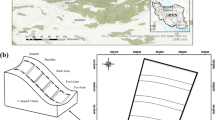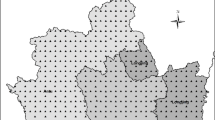Abstract
Vaganov and Hughes reply— The model we used, which is driven only by meteorological variables, reproduces the decadal timescale variations in relative tree-ring width indices that have been observed at three taiga sites in the Siberian subarctic separated by 85 degrees of longitude1. In our study, absolute differences in mean growth rate between sites, related to slowly varying site conditions such as nutrient status, are removed by converting to dimensionless indices with a mean of unity. The results from the fertilization experiment on young plantation spruce trees described by Jarvis and Linder are thus not in disagreement with our major findings.
This is a preview of subscription content, access via your institution
Access options
Subscribe to this journal
Receive 51 print issues and online access
$199.00 per year
only $3.90 per issue
Buy this article
- Purchase on SpringerLink
- Instant access to full article PDF
Prices may be subject to local taxes which are calculated during checkout
Similar content being viewed by others
References
Vaganov, E. A., Hughes, M. K., Kirdyanov, A. V., Schweingruber, F. H. & Silkin, P. P. Nature 400, 149–151 (1999).
Buzykin, A. I. (ed.) The Forests of the Middle Angara Region (Nauka, Novosibirsk, 1977; in Russian).
Goulden, M. L. et al. Science 279, 214–217 (1998).
Abaimov, A. P. et al. Lesovdenie (Russ. J. Forest.) (in the press; in Russian).
Abaimov, A. P. et al. Proc. Sixth Symp. on Joint Siberian Permafrost Studies between Japan and Russia in 1998, Sapporo, Japan 18–19 (Hokkaido Univ., Sapporo, 1999).
Author information
Authors and Affiliations
Rights and permissions
About this article
Cite this article
Vaganov, E., Hughes, M. reply: Constraints to growth of boreal forests. Nature 405, 905 (2000). https://doi.org/10.1038/35016157
Issue date:
DOI: https://doi.org/10.1038/35016157



